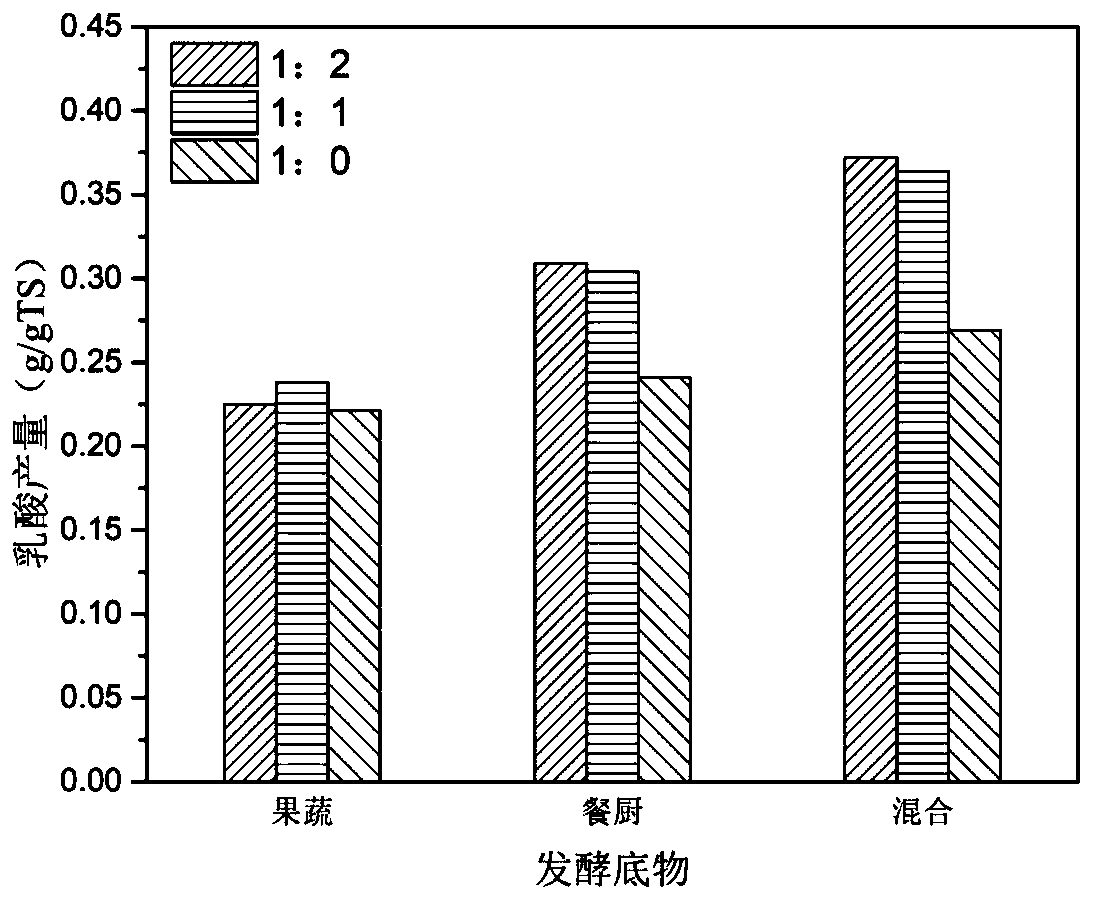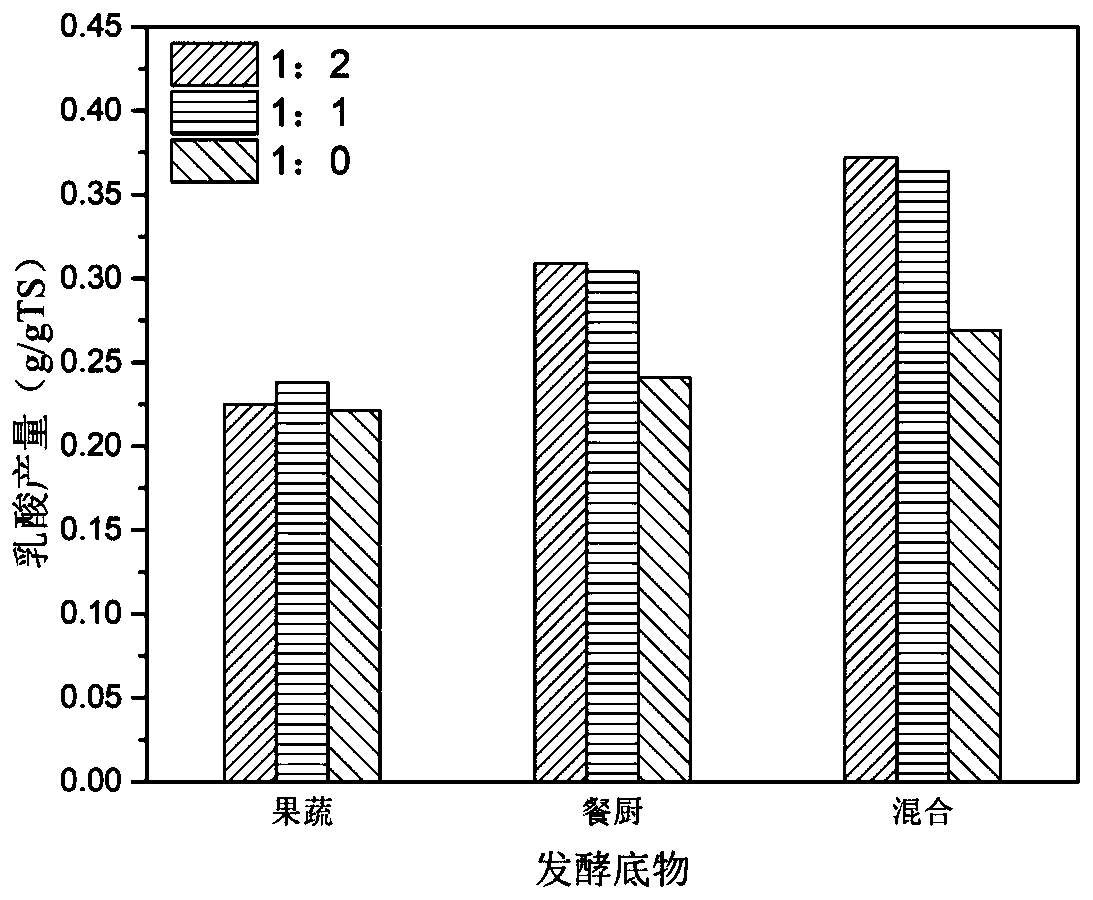Method for removing chlorine and heavy metals in incineration fly ash by using organic mixed garbage fermentation liquid
A technology for incinerating fly ash and fermentation liquid, applied in the removal of solid waste, climate change adaptation, etc., can solve the problems of high price of pure acid liquid, restricting industrial applications, etc., and achieve water saving, high economic benefits, environmental protection Benefit-important effect
- Summary
- Abstract
- Description
- Claims
- Application Information
AI Technical Summary
Problems solved by technology
Method used
Image
Examples
preparation example Construction
[0022] Preparation of lactic acid fermentation broth:
[0023] (1) Strain activation: Take the cryopreservation tube containing Enterococcus faecium stored at -70°C out of the refrigerator and immediately place it in a water bath at about 38°C until the ice inside the cryopreservation tube is completely dissolved. The bacterial solution was inserted into the sterilized MRS liquid medium at an inoculation ratio of 10%, and incubated at a constant temperature of 150r / min at 37°C for 24 hours to complete the activation.
[0024] (2) Preparation of seed solution: Take a certain amount of activated bacterial solution and insert it into new MRS liquid medium at an inoculation ratio of 10% (w / w), and cultivate it at a constant temperature of 150r / min at 37°C for 12 Hour.
[0025] (3) Lactic acid fermentation: the mixture of organic mixed garbage (wet weight) and water in a mass ratio of 1:0-1:2 is the fermentation substrate, inoculated with 2%-15% (w / w) Enterococcus faecium seed li...
Embodiment 1
[0028] Investigate the production of lactic acid in the process of single fermentation and mixed fermentation of kitchen waste, fruit and vegetable waste. The fermentation process is as described above, and the fermentation substrates are divided into 9 types, which are: ① Food waste (wet weight): water = 1:2 (w / w) ② Food waste (wet weight): water = 1: 1 (w / w) ③ Food waste (wet weight): water = 1:0 (w / w) ④ Fruit and vegetable waste (wet weight): water = 1: 2 (w / w) ⑤ Fruit and vegetable waste (wet weight): Water = 1:1 (w / w) ⑥ Fruit and vegetable waste (wet weight): water = 1: 0 (w / w) ⑦ Organic mixed waste (wet weight): water = 1: 2 (w / w) ⑧ Organic mixed Garbage (wet weight): water = 1:1 (w / w)⑨organic mixed garbage (wet weight): water = 1:0 (w / w), of which organic mixed garbage is kitchen waste and fruit and vegetable waste by dry weight The ratio is 1:1 mixed. Inoculate 10% Enterococcus faecium, and ferment anaerobically at 37°C for 4 days. Unit lactic acid yield (g / g (dry w...
Embodiment 2
[0033]Take 15g of dried incineration fly ash and place it in a 250mL conical flask, and add 150mL of organic mixed waste lactic acid fermentation liquid (the concentration of lactic acid in the fermentation liquid is 25.5 g / L) and then sealed, reacted for 120 min under the conditions of a temperature of 25° C. and a rotational speed of 150 rpm, and then centrifuged. The chlorine content in the supernatant was measured by ion chromatography, and it was concluded that 93.1% of the chlorine in the fly ash could be extracted by the organic mixed garbage lactic acid fermentation liquid under this condition.
[0034] Embodiment 2-10 is listed in the following table, and all the other conditions are the same as embodiment 1.
[0035]
[0036]
[0037] Through the comparison of Example 2 and Comparative Example 1, it can be found that under the same amount of water, using lactic acid fermentation liquid to carry out bioleaching of incineration fly ash can greatly increase the le...
PUM
 Login to View More
Login to View More Abstract
Description
Claims
Application Information
 Login to View More
Login to View More - R&D
- Intellectual Property
- Life Sciences
- Materials
- Tech Scout
- Unparalleled Data Quality
- Higher Quality Content
- 60% Fewer Hallucinations
Browse by: Latest US Patents, China's latest patents, Technical Efficacy Thesaurus, Application Domain, Technology Topic, Popular Technical Reports.
© 2025 PatSnap. All rights reserved.Legal|Privacy policy|Modern Slavery Act Transparency Statement|Sitemap|About US| Contact US: help@patsnap.com



